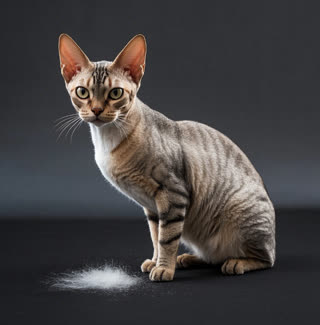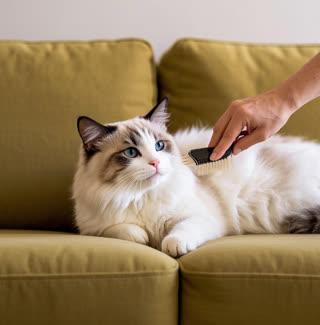1. The Ragdoll Cat Adoption Process: A Step-by-Step Overview
Step 1: Research and Select a Reputable Source
Breeder Verification: Look for breeders registered with organizations like The International Cat Association (TICA) or the Cat Fanciers’ Association (CFA). Ask for health clearances for genetic conditions like hypertrophic cardiomyopathy (HCM) and polycystic kidney disease (PKD) .
Rescue Adoption: Shelters like Adopt-a-Pet.com often have Ragdolls available for adoption at a lower cost (typically $75–$100) compared to breeders .
Step 2: Application and Screening
Step 3: Reservation and Deposit
Step 4: Adoption Agreement and Health Checks
Step 5: Preparing for Your Kitten’s Arrival
Purchase Supplies: Invest in a scratching post, litter box, high-quality food, and toys.
Vet Appointment: Schedule a checkup within 72 hours of adoption to ensure your kitten is healthy .
Home Safety: Cat-proof your space by securing toxic plants and hiding loose wires .
2. Cost Breakdown: Initial and Ongoing Expenses
Initial Adoption Costs
Breeder Fees:
Pet Quality: $2,400–$2,700 (includes spaying/neutering, vaccinations, and microchipping) .
Show Quality: $2,700–$3,000 (for cats meeting breed standards) .
Rescue/Shelter Fees: $75–$100 (may include basic vet care) .
Supplies: $200–$400 for food, litter, toys, and a carrier.
Ongoing Costs
Food: $40–$80/month for high-quality dry and wet food.
Veterinary Care:
Annual checkups: $100–$200.
Vaccinations: $50–$100.
Emergency care: $500–$2,000+ (consider pet insurance) .
Grooming: $50–$100 annually for brushing tools and occasional professional grooming.
Toys and Enrichment: $30–$60/month for interactive toys and scratching posts.
Hidden Costs to Anticipate
Microchip Update: $19 to transfer ownership .
Transportation: Fees for flights or pet nannies if picking up from a distant breeder .
Unexpected Health Issues: Ragdolls are prone to HCM and PKD, which may require specialized treatment .
3. Tips for a Smooth Adoption Experience
Choosing a Reputable Breeder
Visit the Cattery: Observe kittens’ living conditions and ask to meet their parents.
Health Documentation: Request proof of genetic testing and vaccination records .
Avoid Scams: Be wary of breeders offering kittens at unusually low prices or without contracts .
Preparing Your Home
Create a Safe Space: Set up a quiet room with food, water, and a litter box to help your kitten acclimate .
Cat-Proofing: Secure windows and remove toxic plants like lilies and aloe vera .
Bonding and Training
Socialization: Introduce your Ragdoll to family members and other pets gradually.
Positive Reinforcement: Train your cat using treats and praise for behaviors like scratching posts .
Health Maintenance
Regular Checkups: Schedule annual vet visits to monitor heart and kidney health .
Diet and Exercise: Feed portion-controlled meals and provide interactive toys to prevent obesity .
4. Common Mistakes to Avoid
Overlooking Health Screenings: Always ask breeders for health guarantees and genetic test results .
Neglecting Socialization: Ragdolls crave companionship; avoid leaving them alone for extended periods .
Underestimating Costs: Budget for unexpected expenses like emergency vet visits .
5. Frequently Asked Questions (FAQs)
- How long does the adoption process take?
Typically 2–4 months, depending on the breeder’s availability. - Can I adopt a Ragdoll if I live in an apartment?
Yes! Ragdolls adapt well to indoor living as long as they have mental stimulation . - Are Ragdolls good with children?
Yes, their gentle nature makes them excellent family pets .










